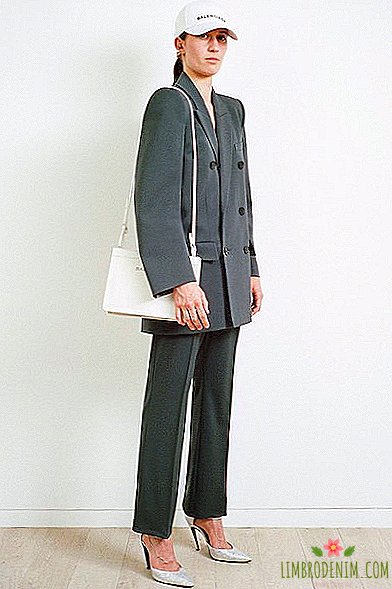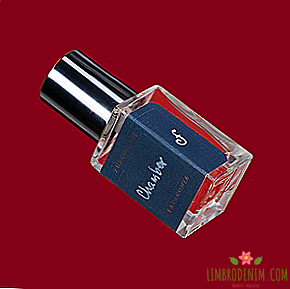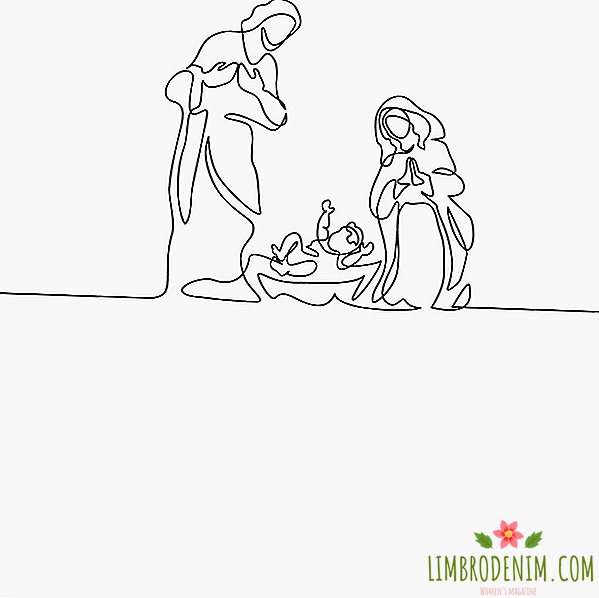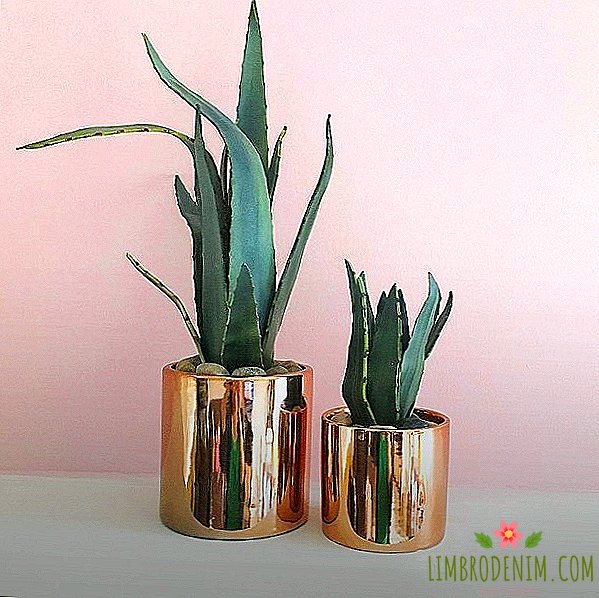Side View: Foreigners about Russian fashion
At the end of the 2016th edition of Business of Fashion showed the cover of the February issue. The slogan of the issue is “The New World Order”, and the face on the cover and, accordingly, the embodiment of this “new world order” is Demna Gvasalia. Coming from Georgia turned out to be the main person in the fashion industry this year. Thanks to him, everyone not only remembered Martin Marghela and the best of his heritage (as Gvasalia says, the MMM approach is no longer in demand within the walls of the house), but also spoke again about former Soviet countries with the most sincere interest. The word "post-soviet" in the title of the material was a guarantee of attendance - the sites Dazed, i-D, different versions of Vogue used it more often than ever.
We asked six people - professionals from different fashion fields, from street-style photographer to fashion director of a large department store - about the role that the Soviet legacy played in the global context in 2016. We figure out how long the wave of interest in the so-called post-Soviet chic will last and whether it will help other designers from Russia, Georgia and Ukraine to be noticed.

Liana saatenshtein
A journalist, a regular contributor to the digital version of American Vogue. Liana speaks Russian and visited, it seems, at the fashion weeks of all the post-Soviet fashion capitals
 Why are post-Soviet motifs so popular? Is this trend related to the political situation?
Why are post-Soviet motifs so popular? Is this trend related to the political situation?
A wave of attention to Gosha Rubchinsky and Demna Gvasalia arose for a reason - they appeared at the right time. People from America and Western Europe did not have the experience of residents of the countries of the post-Soviet bloc. Their culture and aesthetics are a completely new, fresh trend that was lacking. "Market" (with things not from vintage ruin and flea market, but the market) style, Cyrillic - there was nothing like this in fashion before. Everyone wants to look like something especially and have not just clothes, but things-hooks, things-stories that provoke conversation or reflection. Vetements and Gosh offer just that.
 How long will this mod last?
How long will this mod last?
I can not say how long it is - but now all eyes are exactly directed at them, everyone is watching their every move. No longer small concept stores, but huge department stores pick up the aesthetics of Vetements and Goshi. I'm sure: whatever Vetements do, their next decision will also set a new trend. Even if it will have nothing to do with the post-Soviet aesthetics. Demna changed the modern fashion industry.
 Five years ago, shooting Goshi Rubchinsky with skaters on the background of the churches were already in all independent magazines. HIS STYLE HAS NOT CHANGED DURING THIS TIME, but the hype around it still does not fade.
Five years ago, shooting Goshi Rubchinsky with skaters on the background of the churches were already in all independent magazines. HIS STYLE HAS NOT CHANGED DURING THIS TIME, but the hype around it still does not fade.
Gosha will always have a dedicated community of his characters and customers. It is not even relevant because of the clothes - its brand has long been much wider than the eponymous brand. This is a subculture, in the center of which he himself. This year he found models in social networks and is going to hold his next show in Kaliningrad. How many people from America or Western Europe were in Kaliningrad? Such decisions do not allow the interest to fade away.
 For people abroad, designers from Russia, Ukraine or Georgia are all, judging by the headlines, the "post-Soviet world." you, as a person who travels a lot, see the differences between them?
For people abroad, designers from Russia, Ukraine or Georgia are all, judging by the headlines, the "post-Soviet world." you, as a person who travels a lot, see the differences between them?
The difference is mainly felt in how the experience of their own cultures is superimposed on the common experience of people from the former republics of the Soviet Union. For example, Anton Belinsky used a Ukrainian passport - a thing very expensive for all young Ukrainians - as the theme of the S / S 2017 collection. Georgian Situationist brand transferred the country's flag to shirts. Often, when the political situation is tense, designers begin to use elements of national costumes in their collections to emphasize their identity and independence.
 Do you have any favorite brands of these countries?
Do you have any favorite brands of these countries?
I like Russian designer Zhenya Kim. She refers in collections to Korean roots, and in the last season Uzbek motifs appear - and this is also fresh and interesting. Ria Keburia, LTFR and Nicolas Grigorian are three young Georgian brands that are worth watching. In Georgia, there is Lasha Devdariani, who has a very powerful background. I like Ukrainian brands like Anton Belinskiy, Sasha Kanevski and Flow the Label. When I find myself in Eastern Europe, I love exploring local commissions and second-hand stuff: in Moscow “Megastila” and in Kiev, at “Lesnoy” you can find incredible things.


Adriano Chizani
Street style photographer, WhatAStreet blog author, co-owner of TheComplainers agency and regular contributor to several Vogue publications from Italian to Japanese.
 As a street-style photographer, do you see the influence of the post-Soviet trend on how people dress?
As a street-style photographer, do you see the influence of the post-Soviet trend on how people dress?
Yes, this is true one of the most notable trends in the street clothing market, and in the "high" fashion. Moreover, this trend is only gaining momentum: everyone mixes things of “traditional” luxury brands with sportswear - this is today the main image of a new fashionable wave.
 What brands are found on the street most often?
What brands are found on the street most often?
Gosh Rubchinsky - just the king now. But I also see a lot of Walk of Shame, Outlaw Moscow. And sweatshirts Russian Mafia New World Order. They are all great!
 Why are you so interested in this topic?
Why are you so interested in this topic?
I have always collected items related to the army, form elements - I just like the way they look and that every detail is functional. I especially like the Soviet uniform - it is very recognizable. I collect old clothes, watches, stripes, even documents, because I am impressed by aesthetics: strong, brutal, tough. In my apartment there are some flags of the times of Stalin and Lenin: I do not support their policies and do not miss this system, no - it's just my strange hobby. When I go to any of the countries of the former Soviet bloc, I try to fill my suitcase with items from flea markets, from small shops. Something cool can often be found at Brighton Beach in New York.
 Why do people from a different environment also want to feel this aesthetic?
Why do people from a different environment also want to feel this aesthetic?
Now everyone is keen on this image of the "bad-guy-slums-in-the-army-jacket", as I call him, and many Russian brands take it as a basis. At the same time, they complement it with something of their own - this is what everyone touches. For us, this is something fresh, brand new, very cool.
 Who are the street-style Russian heroines now most influential?
Who are the street-style Russian heroines now most influential?
There are many trendsetters, and every year someone adds a new one. But the queens are Lotta Volkova, Natasha Goldenberg, Olga Karput, Irina Linovich and Anka Tsitsishvili.
 Streetstyle was already “Russian wave”: everyone was passionate about “queens” (so the new york times were called FASHIONABLE Russian GIRLS. - NOTE. REV.).
Streetstyle was already “Russian wave”: everyone was passionate about “queens” (so the new york times were called FASHIONABLE Russian GIRLS. - NOTE. REV.).
Previously, the "Russian style" was completely different: "heavy luxury", embroidery, Swarovski crystals, silk, leopard, fur, heels. Everything had to talk about status and sexuality. The new generation has left all this “rich” past behind and right now, in front of everyone, is writing a new Russian fashion code, the opposite of the “Russian style” that was before.

Ricardo Tortato
A fashion expert who has been in Russia with an enviable regularity since 2016 - he became the fashion director of the men's collections of DLT and TSUM.
 What do you think made the style of the youth of the post-Soviet era so popular now?
What do you think made the style of the youth of the post-Soviet era so popular now?
The fashion industry always refers to different historical periods, both already studied and "lost", which have fallen out of common sight. The latter is even more interesting to her. Just look at how modern society looks at the culture that has grown up in the American ghetto, or religious communities, their music and order. Before the revolution, Russia was an important part of European culture, one of its leaders, and then suddenly closed off from everyone and developed separately, cutting itself off from other countries and opposing itself to them. Naturally, now, when these walls fell, everyone turned their attention to it. Everyone wonders how society is restored after a long isolation, which could not affect him.
 How long will this trend be on top? Demna, Lotta or Gosh themselves gradually move away from it.
How long will this trend be on top? Demna, Lotta or Gosh themselves gradually move away from it.
I do not think that this wave will last long. In fashion, everything is transient, trends go as fast as they appear. Demna already does not limit herself only to the post-Soviet heritage and in the same way appeals to modernism and world pop culture.
 How many people around you have changed their style with the arrival of this wave?
How many people around you have changed their style with the arrival of this wave?
This, of course, occurs. But I think that everyone should remain true to themselves — including their own personal style of clothing. For me, those who walked from head to toe at Chanel look weird, and the next day pulled a Supreme t-shirt just to look cool.
 Many brands in the post-Soviet countries work in a VERY DIFFERENT aesthetics. DO YOU think that close attention to their colleagues will help them to reach the world level?
Many brands in the post-Soviet countries work in a VERY DIFFERENT aesthetics. DO YOU think that close attention to their colleagues will help them to reach the world level?
I myself am not one of those people who succumb to fleeting trends. This trend is not close to me. I can not say that the onset of this wave has opened up to me some new designers from Russia or post-Soviet countries, except, of course, Vetements.


Emily Hultqvist
Independent stylist and staff editor of fashion Numéro Russia. Emeli is Swedish, but she managed to live in different cities and countries, and spent the last two years in Moscow, where she came, as she says, out of love
 Why has the post-Soviet theme become so popular?
Why has the post-Soviet theme become so popular?
The point is to merge several factors at once. This is a good PR with a very clear strategy, and the constant need for "fresh blood", which the industry always craves. It is also important that brands with such an aesthetics positioned themselves as rebels - someone who goes against the traditional fashion system. Ghetto-style and sports theme is not the invention of a new wave of designers who are now at their peak. But if the industry has already managed to “work out” the style of people from American slums, the Russian one has not yet seen it. Russia and other post-Soviet countries are exotic for her. The inscriptions especially win: Cyrillic - new hieroglyphs.
 How long is it?
How long is it?
I do not think. The main faces of the trend - that is, Demna and Lotta - move on, their style does not close on the '90s alone. They were probably influenced by the work at Balenciaga. So, while the trend has not disappeared at all, Russian brands, even outside this aesthetics, should use the situation. It is now easier to draw attention to oneself simply at the expense of this massive interest in everything “post-Soviet”.
 Do you use this style in the shooting? No, I generally rarely touch on motives, somehow tied to the sport - this is not close to me. Judging by other shootings and the way fashion people dress, everyone basically takes the total bows of these topical brands. Vetements with a traditional luxury in the spirit of Dolce & Gabbana no one interferes.
Do you use this style in the shooting? No, I generally rarely touch on motives, somehow tied to the sport - this is not close to me. Judging by other shootings and the way fashion people dress, everyone basically takes the total bows of these topical brands. Vetements with a traditional luxury in the spirit of Dolce & Gabbana no one interferes.
 Do you have any favorites among designers from post-Soviet countries? On this fashionable wave, no one “entered” into my wardrobe - I still have one favorite, Tigran Avetisyan. It cannot be said that he works with the post-Soviet aesthetics, there are no national references in his collections, the brand can be called international. I also like J.Kim, the way traditional Korean, Uzbek motifs mix with European style, and Vilshenko.
Do you have any favorites among designers from post-Soviet countries? On this fashionable wave, no one “entered” into my wardrobe - I still have one favorite, Tigran Avetisyan. It cannot be said that he works with the post-Soviet aesthetics, there are no national references in his collections, the brand can be called international. I also like J.Kim, the way traditional Korean, Uzbek motifs mix with European style, and Vilshenko.

Olga Kurishchuk
CEO and Creative Director of 1Granary - a project to support young designers, connecting them with buyers, journalists and other industry professionals. Editor-in-Chief of the magazine of the same name, which was previously made by students and graduates of Central Saint Martins, and now by four world fashion schools at once
 Now the title with the word "post-Soviet" is already enough to arouse the interest of readers on any fashion site.
Now the title with the word "post-Soviet" is already enough to arouse the interest of readers on any fashion site.
Everyone in the industry was very boring. How much can the tenth round revise the 70s in British and French fashion? And then something new, something with a soul, with music, with history, with crazy energy, with other people and culture. Something that only the Russians themselves could have done, those who had absorbed this aesthetic since childhood, no one else is capable of it. Plays a role and the fact that Russia and Ukraine all the time in the news. Everyone I know in London is intrigued by the Russians. They are considered to be very shocking, incomprehensible, rude, but at the same time with a big heart, drinking, dancing and singing to the last breath. And here Lotta, just such, rude and honest. What they brought into fashion this year is all from the heart, and therefore everyone believed them.
 Has the attitude to people from post-Soviet countries that come to study and work in the fashion industry change?
Has the attitude to people from post-Soviet countries that come to study and work in the fashion industry change?
If it were not for the issue of a visa, after five, or even all seven years of study, it becomes difficult for the university to distinguish who is coming from. Creative industries are very tolerant if you are talented - and very cruel if someone decides that your work is not interesting. It’s very difficult to work after graduation because of the visas, as most companies don’t want to do this, but they are happy to take people from Eastern Europe if this is not a problem.
 Will this interest help those immigrants who do not work with this aesthetics?
Will this interest help those immigrants who do not work with this aesthetics?
Unfortunately, all fired up the post-Soviet aesthetics as quickly as they were tired of it. For us, this is a whole culture, nostalgia and romance, but for everyone here, who saw it for the first time only recently, it’s just a stage that we’re fed up with. We work with so many magazines and stylists, and all in one voice say that they can no longer see the same thing.
 Do fashion students from post-Soviet countries unify something in their approach to work? Is there any single community where they support each other?
Do fashion students from post-Soviet countries unify something in their approach to work? Is there any single community where they support each other?
We do not expect that they will simply give us something, that someone owes us something. We are all workaholics. And almost no one wants to come back, because in our countries the industry is still very poorly developed. All Russian-speaking friends are friends and communicate, but people in the company are constantly changing because of the visas, everyone is constantly leaving. It was painful at first, but now we are all used to saying goodbye to friends.


Natt Sultanova
Fashion editor for Fashion For Men magazine
 What do you think is the reason for the interest in everything post-Soviet?
What do you think is the reason for the interest in everything post-Soviet?
The reason is in the monotony of men's fashion: everything that we see on the catwalks of Milan and Paris is dedicated either to properly sitting suits, or alternatives. Russian themes in men's fashion were rarely of interest to designers: Gauthier and Galliano, for example, turned to her, but with a touch of history (ballet, bears, fur coats), but the Soviet style in the European fashion industry had never been in sight. And then on the podiums there are sweaters of our fathers and aprons of oilcloth, which were in the kitchens of our grandmothers. Of course, it immediately caused a stir. Post-Soviet motives are a new unexplored field for all who did not live in the Soviet Union.
 How long is it?
How long is it?
To be honest, I think, as long as there is Gosh Rubchinsky, Lotta and Demna, no matter how they are criticized and what they are doing, the interest will not fade. They are the new generation that is deciding now.
 I immediately recall the slogans about the "new world order" and "Russian mafia".
I immediately recall the slogans about the "new world order" and "Russian mafia".
“Mafia”, of course, exists - this is one party of Gosha, Lotta Volkova, the Gvasalia brothers, the Lumpen agency, and so on. They all support each other. They are united by nostalgia, and, I think, they really truly love the aesthetics of the Soviet 90s.
 But not everyone works in this style. Will close attention to other designers of the post-Soviet countries?
But not everyone works in this style. Will close attention to other designers of the post-Soviet countries?
I think no. This field is so narrow that any attempt by other designers to pay attention to Soviet aesthetics will look like plagiarism, at least for now. Designers can work with this aesthetics, but it will not cause the same rapid surge, although it can be commercially successful. From examples of successful followers of Gosha: Northern from the Russian Mafia New World Order - all the guys from his own party.
 Do you have things related to this trend, Or the work of other designers from Russia, Ukraine, Georgia?
Do you have things related to this trend, Or the work of other designers from Russia, Ukraine, Georgia?
Of course, there is a Russian Mafia New World Order sweatshirt - together we make parties in Paris. And, of course, Vetements and Ria Keburia.
Photo: Totokaelo (1, 2), KM 20 (1, 2), Outlaw, Balenciaga




